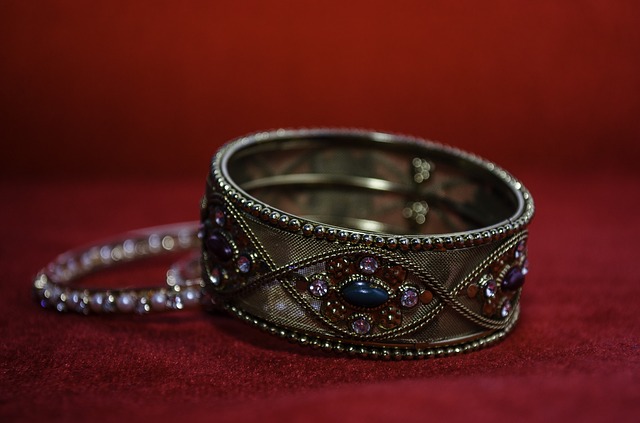
The jewel has accompanied man since the beginning of time, created by him and brought has been used as an ornamental and decorative object, an ornament that beautifies the physical presence of the human being.
But those pieces have brought with them a message, a meaning, not only have they fulfilled in time that ornamental function but they have distinguished themselves by having a communicational function. They carry messages that have been shaped by those who create them and at the same time messages that are the fruit of those who interpret them, the jewel is full of intentions, of messages that are transmitted and are part of the feeling and culture of the people.
A piece of jewelry is a small object that can have great meaning for a person. People and jewelry are inseparable; jewelry having a human scale, the people giving meaning to jewelry. Hierarchy, power, love, protection: jewelry has always been used to communicate with others (Siemelink, 2008).
Ancient objects are known to have been made as complements to very diverse materials such as stone, horn, wood, bone, shells, cloth, and examples have been found that date back to prehistoric times. Throughout the evolution of jewelry the noblest and most difficult to find materials have been relegated to the main classes, and usually the precious stones and metals were reused, reworked or restored to make new jewelry more in line with the fashion of the moment. In today's post we tell you more about the art of jewelry throughout history.
The most common materials and the most used have always been gold, platinum and silver, although it is also common to find jewelry made of bronze, iron, glass and other materials. For example, during the 19th century materials such as braided hair were used to make bracelets, earrings…
On the other hand, the use of precious stones set in the pieces of jewelry is very common, there are very old examples made with rhinestones. Although, nowadays, the most desired and used precious stones are diamonds, rubies, sapphires, emeralds, topaz, aquamarines, tourmalines, spinels, peridot, garnets, quartz, turquoises and pearls.
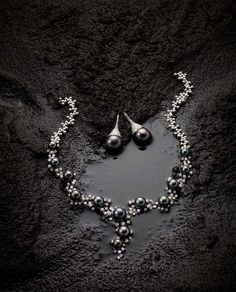
Balclis includes in all its online jewelry auctions of all styles and eras. From antique renaissance jewelry, through baroque, Belle Époque or Art Déco pieces, to modern jewelry.
Collectors take into account different aspects when buying a piece, although one of the most important is its brand or author.
Balclis is a great showcase to be able to acquire jewels by Internet of so quoted authors as Masriera, Fuset and Grau, Mercadé, Manolo Hugué, Paco Durrio or Teixé. But it is also usual that our auctions include must have pieces from great brands such as Cartier, Boucheron, Van Cleef and Arpels, Bulgari, Chopard, Chaumet or Pomellato among others.
Therefore, the jewels are valued by different aspects, such as design, author, brand, gems, material, time… jewelry collectors take into account all these values when buying a piece.
But to understand the value of jewelry, it is necessary to know its history and evolution.
In jewelry making in ancient Greece it was common to use jewelry that responded to the need for adornment. In the usual environment, we find the use of necklaces or chokers, earrings, bracelets and rings or rings. During the ceremonies, it was frequent the use of diadems and chains or belts. And in the clothing, fibulas and pins were used to hold the clothes.
The most frequent techniques were the work of granulated, filigree, chiseled and it is common to find pieces in embossed gold. The Greeks already worked the setting of stones in their jewels, as well as the use of enamel.
The iconography of the jewels was very diverse, it is very common to find vegetal motifs such as rosettes, palmettes, leaves and acorns. Also animals such as rams, lions, snakes and sphinxes. And the human representations as divinities and heroes. These motifs are repeated in necklaces, diadems, earrings, rings and bracelets.
Within the Greek period, marked by the archaic, classical and Hellenistic cover, it is worth noting that the latter was the most prolific in terms of jewelry.
In a time when Greek culture was becoming universal, new models and new techniques and materials were introduced. The jewels are sumptuous and there is an exaggeration of the forms. It is unusual to find pieces from these periods for sale, although there are examples in museums as important as the British Museum.
The history of Etruscan jewelry has its origin in an ancient region of central Italy, Etruria. Cultures such as the Phoenicians, Greeks and Egyptians influenced this civilization thanks to the flow of trade that was in that region. This allowed the Etruscans to be excellent craftsmen, jewelers and metallurgists.
Their jewelry stands out for the use of techniques such as enamel, granulated gold and stone setting. And the most frequent motifs were basically animals such as lions and ducks and sphinxes. In the 4th century BC, Etruscan jewelry lost its unique character and became largely indistinguishable from classical Greek jewelry.
Roman jewelry stood out both for its artistic value and for the richness in the use of a great amount of materials. The Romans had access to a great variety of materials and natural resources from the territories under their rule. In addition, as good merchants, they had access to exotic precious stones that came from the Far East.
The most used jewels, and of those that have remained very good specimens, were brooches, bracelets, earrings, rings, buttons and necklaces among others. The materials used for these pieces were diverse, being gold the most precious metal. In addition, other metals such as silver and bronze were also used.
Precious stones and pearls were also very appreciated by the ancient Roman civilization, finding pieces generously adorned with pearls, emeralds and other precious stones.
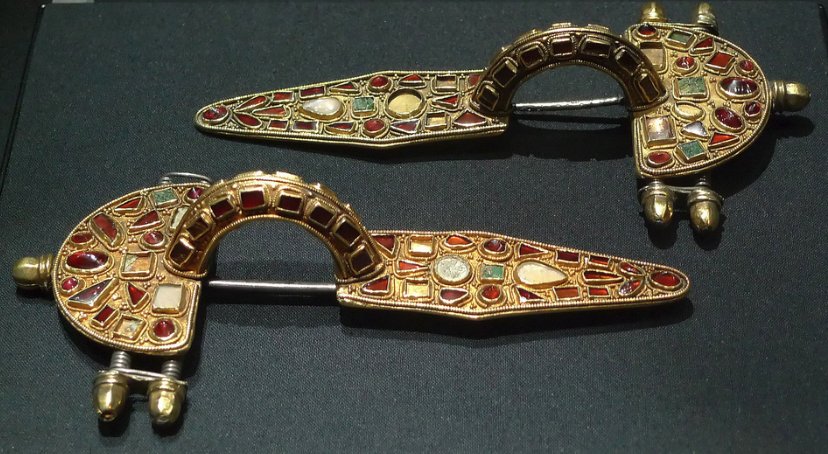
After the fall of Rome, jewels continued to be very important. Medieval jewelry stood out for the quality of its pieces. Rings or rings, bracelets, earrings, brooches, necklaces and fibulas were set with important stones and were widely used by the civilization of the time. Precious stones were acquired through commerce and the most frequently used were sapphires coming from Ceylon and Persia, emeralds from Egypt and diamonds from India and Central Africa.
Although the pieces of religious nature were the most popular. The use of symbolic motifs with animal figures was limited and the representation of forms associated with Christianity predominated.
The Renaissance emerged as a cultural movement in Italy from the 14th century and spread to the rest of Europe during the 16th century.
In the 15th century, jewelry became very important in the fashion of the time and it was usual that velvet and silk suits were embroidered with stones and pearls. As we can see in the portraits of the time, the jewels were understood as a symbol of prestige and power and were closely linked to the Court.
The guilds had a great importance during this period, being practically impossible to make any piece without their tutelage. During the process of creation, the pendants, necklaces, rings were first drawn or engraved and then the work of working the gold, enameling and setting the stones began. Today we can learn about this procedure from the drawings that have been preserved. For example, in the Spanish case, the "Llibres de Passanties" preserved in the Museum of History of the city of Barcelona, are a clear testimony of these works.
In the 15th century, jewels acquired a lot of relevance in the fashion of the moment and it was usual that the velvet and silk suits were embroidered with stones and pearls
The Renaissance jewelers and goldsmiths managed to enrich the techniques applied in jewelry and, therefore, there was an evolution in its realization. The new "technologies" of the moment allowed to cut stones of a greater hardness and to make engravings on gems.
The use of the pendant, and specifically the pins, combined with baroque stones, set gems and enamel was extended and the brooches with miniature portraits were very popular. The ornamentation of fantastic animals such as mermaids, monster heads and centaurs was very common, although in a period dominated by religion crosses and medals were still made combining gold, gems and enamel.
The Baroque era brought about a great evolution in the field of jewelry. To the religious and symbolic pieces inherited from the past, other purely ornamental jewels were added, which began to have the objective of enhancing the quality of execution and the richness of the materials, and to show the status of the wearer.
Secular or fanciful forms, which responded to aesthetic criteria or whim, gradually imposed themselves against religious or votive forms, altaret-type pendants, pieces that could be considered true sculptures or portable paintings, and even true architectural miniature fronts. Balclis has auctioned examples very similar to those we can find in such important collections as the Fundación Lázaro Galdiano.
Other common pieces of the time were the dressings or parures, such as the ribbon brooch made of gold and diamonds. These pieces were the physical materialisation of velvet and silk bows and were used on the bib, sewn, to mark the horizontal line of the neckline, which at that time had dropped considerably.
Most of the jewelry designs of this period were made in the Parisian workshops, and were manufactured in the local goldsmiths' guilds which, in the case of Spain, had great mastery, especially the workshops of Madrid, Cordoba and Zaragoza.
In the 18th century, the gems were always presented in closed mounts, a fact that did not allow the light to be reflected when passing between the stones. The jewelers of that time realized the importance of highlighting the brightness of the stones and began to open the frames and hold the gems in the air so that they would look in all their splendor.
During the 19th century a great variety of fashions and styles followed one another in all artistic fields, and of course the same thing happened in the field of jewelry, where historicism stood out with numerous sources of inspiration, from classical to baroque.
To all this social, technical and material renewal, we should add the emotional one, which intensified after the appearance of Romanticism. Jewelry became one more manifestation of this general feeling and the jewels were given a great symbolic and emotional charge. Whether as a souvenir of a deceased person or a loved one, there was a widespread use of jewelry with hair guards or picture frames, and even pieces made of human hair.
Another important point to highlight is the use of transformable and multipurpose jewelry, according to social protocol. The daytime label was different from the nighttime label. Thus, the day required more subtle jewelry, while in the evenings it was more frequent to wear sets of pearls or lush necklaces filled with diamonds. Proof of this are the detachable earrings, which could be shortened according to the occasion, or the diamond flower brooches, whose central flower is detachable and can be worn independently.
Finally, the 19th century is the time of the neos and the revivals. All arts emulate the great periods of the past, such as the Baroque or the Roman Empire. It is habitual to find in Balclis pendants that reproduce in technique, aesthetic and thematic, the pieces of the epoch of the Renaissance.
The great variety of styles and techniques, and the significant presence of jewels in the society of this period, make the 19th century an exciting era in the history of jewelry.
The last flurries of nineteenth-century European colonialism coincided with an era of unparalleled wealth, refinement and sophistication that was abruptly interrupted by the arrival of World War I. This period, which we call the Belle Époque, was not a break with the past or a novelty in the arts, but rather a reworking of old themes and motifs.
The great representative of the jewelry of this period was the Frenchman Louis Cartier, who commissioned his workshop to search for patterns in old documents, in order to recover designs from the past. Specifically, the 18th century was his main source of inspiration.
The pieces from the beginning of the 20th century are also very important for jewelry collectors. Belle Époque jewelry, so characteristic for its delicate designs, is very popular among the most demanding buyers. The fashions of the beginning of the 20th century were evolving, the Art Deco was characterized by its dresses of much more straight lines, and by complements of a more geometric air and designs of greater colorfulness.
The diamond was the most popular gem along with pearl, and it was common to frame it in lines of black enamel or onyx, so that many considered it a very "black and white" aesthetic. The goldsmiths were inspired by the stylistic contribution of Diaghilev's Russian ballets and the rediscovery of cultures such as the Egyptian or Japanese. The Second World War marked the end of the Roaring Twenties and gave way to a new, much more explosive decade.
In the 1940s gold became the main precious metal, even though it was used in thinner and lighter sheets. Cylindrical, hollow chains, sinuous gold tubes and large floral brooches became fashionable.
With the end of the war, Parisian haute couture houses such as Christian Dior, Yves Saint Laurent and Chanel regained their verve, dressing the most glamorous women in society. Yellow gold continued to enjoy great popularity and was combined with gems like turquoise, amethysts and of course, the always desired gold and diamond jewelry. Figures such as Grace Kelly and Jackie Kennedy were a reference of style and they placed great value on pearl necklaces, which had a rebirth becoming the piece that every woman should have in her jewelry box.
Another outstanding figure of the moment was the silversmith Georg Jensen, whose Scandinavian designs are highly valued by collectors around the world and of which Balclis has sold several copies.
During the 1960s, it was the English and their more pop aesthetic that dominated the fashion and jewelry market. Accessories were worn large, bracelets, necklaces and huge earrings in saturated colors or metallic futuristic inspiration revolutionized the market.
Italy took over from France as a reference point for style, and firms such as Gucci and Ferragamo were the symbols of youthful coolness.
In the 70's, jewelry began to express spirituality instead of opulence. Van Cleef and Arpels set the standard of the era with gold pieces set with rubies, emeralds and diamonds. The Italian house Bulgari became very important during this period and designed pieces such as necklaces, bracelets or earrings that could be worn both during the day and at night.
And with the 80's came the power and glory. The color black dominated fashion and served as a background for the striking and ostentatious jewels in polished gold. The woman of the 80's appeared powerful and feminine and executive women wore large jewels to reflect their supernatural power.
Nowadays, in the 21st century, jewelry is experiencing a revival of the 20th century, finding in the market both Belle Époque or Art Déco style pieces and vintage style pieces as in the 50s or more exuberant pieces as in the 80s and 90s.
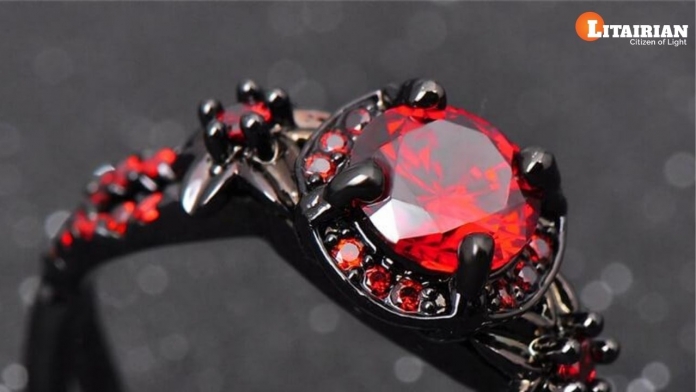
THE USE OF JEWELRY HAS BEEN AND CONTINUES TO BE AN IMPORTANT PART OF EVERY SOCIETY. BUT BEYOND ITS MERE DECORATIVE VALUE, ITS USE HAS GREAT SIGNIFICANCE FOR MANY CULTURES FOR WHICH IT IS POSSIBLE TO FEEL ITS EFFECT ON BOTH A SPIRITUAL AND A PHYSICAL LEVEL.
Many precious metals and stones can have properties that influence our mood or our physical well-being and even influence our luck or good fortune.
Traditionally, over many centuries, some materials have also been used as protectors in many cultures, in addition to representing social status and power. Beliefs in the powers of metals and precious stones have always existed and many people today still rely on them in their choice of jewelry. Surely these people would make their choice from the following list of jewels and materials that are considered beneficial in some way:
It is believed that silver can be absorbed through the skin so wearing silver jewelry can be very beneficial. The pain-fighting properties of silver are known, but it is also vasodilatory and therefore reduces blood pressure.
Gold, considered the most valuable and prestigious precious metal, has always been considered a symbol of power and is therefore believed to have properties that infer value to the person and even extend his life. It also has anti-aging qualities and is used, to a greater or lesser extent, in many ranges of cosmetics that have this purpose.
This gemstone is known as the stone of peace and tranquility, so it is believed that it can help control mood swings and anxiety problems. It is a stone full of energy that helps strengthen the person who wears it.
It is said of the aquamarine stone that it is a carrier of positive energy and therefore is the stone of happiness and luck. Also, in a more organic way, it can help with physical problems in the eyes, teeth or digestive system.
Like aquamarine, the pearl is also considered to be a carrier of happiness and positivity, and is believed to give the personality luster and joy. Not in vain, pearl in powder form is widely used in cosmetic products to achieve a radiant skin. As far as the corporal part, pearls can be of aid in digestive problems or of heart.
This stone has been for many centuries considered a natural remedy for pain, especially head or throat pain, so its most common use is in neck jewelry. If we decide to use it in bracelets it could help us with pain derived from arthritis and to manage our anxiety levels.
It is said that quartz, especially rose quartz, has positive effects on the mind and acts as a cure for anxieties and distress. This has made it traditionally considered the stone of love because it is precisely this feeling that usually causes more anguish.
Whatever the case, what is certain is that any jewel has an impact on its wearer by the simple fact of its presence. Wearing a beautiful and spectacular jewel makes us feel unique.
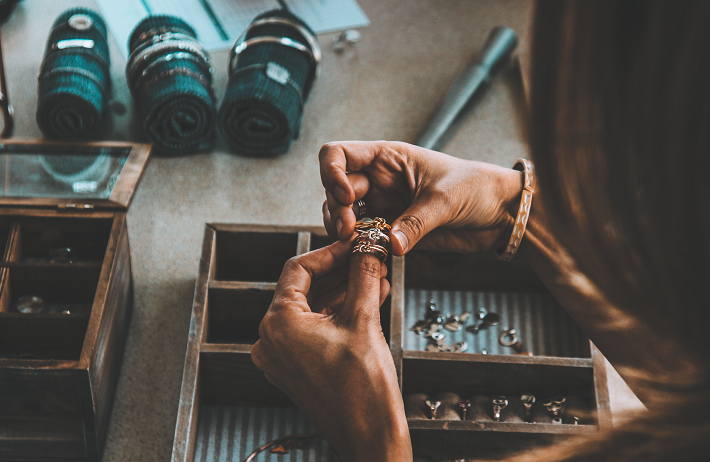
There are several places where you can buy gold jewelry, we will show you each one and what you can get in them:
The place par excellence, there is the company, a brand that guarantees that this garment that they are going to sell you is really made of gold and not a bath that when you wear it and you sweat a little leaves your skin green because it was a cheap fantasy piece.
In jewelry stores you can get a guarantee with the garment, although of course, the price of the jewelry may be much more expensive and usually these places sell new pieces and perhaps one or another used.
With the viralization of the internet, there are more and more stores where products are sold online and gold jewelry is no exception, so there you can choose the product you want and see a variety of qualities and prices.
Here, the important thing is that you see the prices and the quality guarantees, you can't choose the first one, but you can choose the one that has more reputation and that their buyers affirm that in fact it is gold and quality jewelry that they sell.
The least recommended of all, since they are with a stall on the street or a fair and it is certain that there are no precious pieces, unless they are some stones with energy.
But gold, it is very doubtful that they have it, so be careful when buying jewelry and its quality, regardless of the talent of the artisan, surely the metal no matter how yellow you see it, is far from gold.
If you're going to buy gold clothes, these are the tips you need to keep in mind:
If you want to have a piece to be the center of attention, then you should have a large necklace, but be careful, just as they make you look better because they are eye-catching, they also highlight certain elements of the body where it is worn.
Every piece of jewelry has its moment in time. A huge choker can be worn on a night out with friends, but not on a business date.
Traditional jewelry is better, if it is an engagement or wedding ring, much better.
If you're going to buy a piece of jewelry, you have to think about how long it will last, so look at the quality and durability.
Precious jewelry should not be worn constantly because the stones and metal wear out, even if it is made of gold, no matter how precious it is.
Think about the amount you want to pay for that garment and it will be easier for you to choose the product. Many people go to a store without thinking about the amount and when they leave they leave with an expensive piece of jewelry that they charged to their credit card and they will spend a lot of time paying for it.
In the store you can try on the garment, see how it looks, look in the mirror, from various angles, imagine a suit, other shades you wear and you'll know how you could look with that garment.
The same applies when you see them on the internet, although you can't try them on for obvious reasons, you can imagine how you would look in different shades and you will see that you will choose better.
Finally, choose a homogeneous style for the jewelry, think that after acquiring it the new jewelry will have to be worn from time to time but most of the life is spent in a drawer.
Better get a design that can be worn with other pieces of your collection.